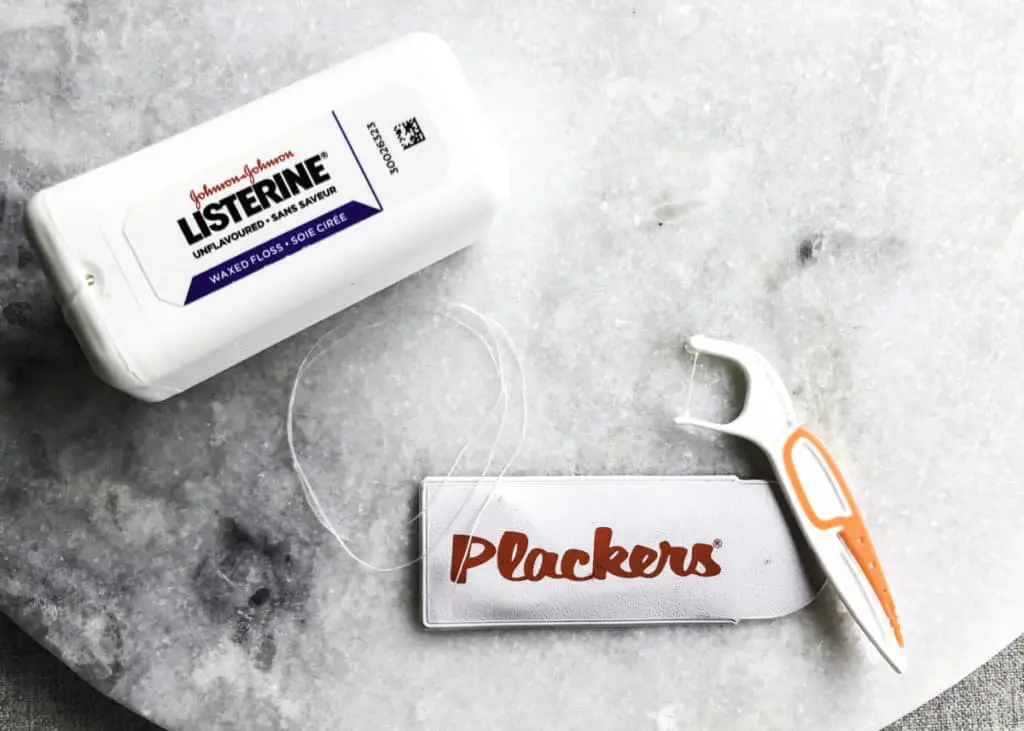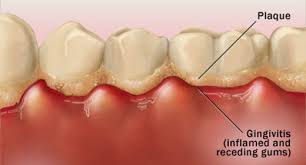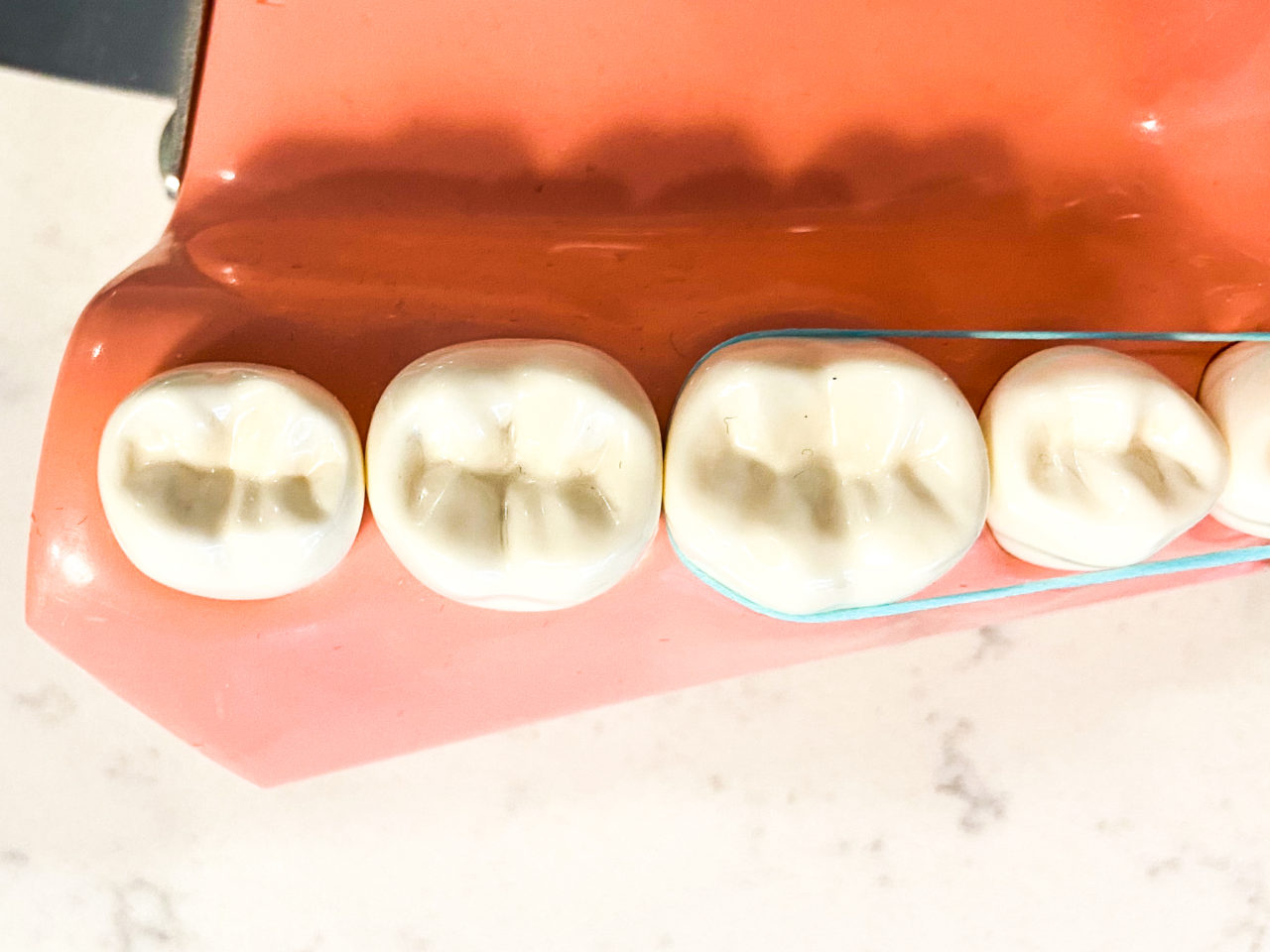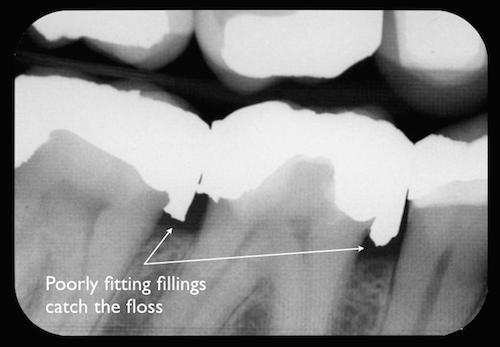Dental flossing can help remove food stuck between the teeth and disturb the bacteria that can cause gum disease and tooth decay. But can flossing damage the teeth? As a dental hygienist, I often explain to my patients the importance of the frequency of flossing and how too little or too much can cause issues.
Dental floss can damage teeth if performed too much or incorrectly. Aggressive flossing can cause gum recession and clefts, root exposure, tooth sensitivity, and increased root cavities. Flossing and interdental cleaning is recommended once a day to prevent plaque accumulation and gum disease.
Read on for a full explanation of how dental floss can damage teeth, a personal story, and how to heal gums from floss damage.

How dental floss can damage teeth and gums
One time at a dental conference, I heard someone say that more people would rather clean a toilet than floss their teeth. I was shocked! I laughed. Surely not.
It turns out many people don’t like to floss as they find it too difficult, it hurts their gums, they think it will damage their teeth and gums, or they pulled a filling out once and swear never to floss again because it pulled their filling out. Trust me; I hear every excuse for not flossing under the sun.
Dental floss is a great tool when used correctly, like anything. You cant use a hammer for a screwdriver (you can try, but it will be much more complex than using the right tool for the job).
Using floss correctly and safely is beneficial and can really make a difference in someone’s oral health condition.
Flossing once a day or at least every 2nd day can help remove and disrupt the bacteria that cause gum inflammation, gum disease, and tooth decay. When the bacteria levels are managed to a healthy level, there is less inflammation in the gum tissue, which helps our entire body be healthy.

Misusing floss (including too often) can affect the teeth and the gums.
According to this study , the effects on the tooth surface from flossing are minimal, but when the mouth is dry, there is more friction which over time can affect the tooth surface and wear it down. But this is only visible on a microscope. So for me, I see this as not a risk at all and not a reason to stop flossing.
, the effects on the tooth surface from flossing are minimal, but when the mouth is dry, there is more friction which over time can affect the tooth surface and wear it down. But this is only visible on a microscope. So for me, I see this as not a risk at all and not a reason to stop flossing.
Read now: What Floss Do Dental Hygienists Recommend? Does It Matter?
Is flossing more than once a day bad?
But flossing too much is not good. Once the bacteria is disrupted with dental floss, it takes about 24-48 hours for the bacteria to reach levels that will start to cause issues and calcify into dental tartar (calculus).
Over time, tartar (calculus) needs to be removed by a dental hygienist or other qualified dental professionals to aid the mouth in becoming healthier.
Read now: How Dental Hygienists Clean Teeth! What You Need to Know!
Flossing too much (more than once a day) can eventually lead to gum recession because of the repeated pressure on the gum tissue, which can trigger it to pull back and recede. The more the gums pull back from the tooth, the more root exposure there is.
The roots of the teeth are much softer and more vulnerable than the enamel on the crown of the teeth. Cavities can quickly form on the root and be abraded away with abrasive toothpaste and aggressive tooth brushing.
Flossing too much or incorrectly can also damage the gum tissue. The gums can be cut and leave a cleft by the floss coming down too aggressively on the gums. It can also blunt the papilla (the gum tissue that comes up between the teeth) and create black triangles that make it appear dark between the teeth.
Not to say that no one should ever floss more than once a day. Certain circumstances may warrant more cleaning in-between the teeth. People going through orthodontic treatment or medical treatments such as chemo that affect the mouth may need to floss more than once a day to maintain good oral health.
If you are concerned that you are flossing too much, you can also speak to your dental professional.
But the damage to the gums and teeth has a lot to do with the technique used. Proper technique can prevent damage to the teeth and gums, make it a much more comfortable experience, and provide a more thorough cleaning.

Proper floss technique to prevent damage to teeth; C-shape flossing
Flossing with the correct technique can prevent a lot of damage, as I discussed previously in this post. Not only does it prevent damage to the structures in the mouth, but the floss will also cover more surface area and glide much easier underneath the gum tissue.
I linked a post that I wrote below with step-by-step instructions on how to perform the C-shape flossing technique perfectly, and each step has pictures or a video to show you visually.
Read now: How to Use String Floss; Steps of Use With Pictures
Can you pull a filling out by flossing?
Another issue that can arise from more aggressive and forceful floss is; If dental restorations are poorly done, poorly fit or are failing, floss can remove them. Sometimes this can happen by accident, or a cavity could form underneath the dental restoration, causing it to become loose.
Usually, it has nothing to do with the floss if the filling comes out while flossing. Sometimes the dentistry work is terrible. I have seen atrocious work by dentists that have left a massive amount of filling material stuck between the teeth, creating an overhang.
An overhang filling (as you can see in the picture below) can cause the floss to catch. It can also cause bacteria and food to catch as well, increasing the chance of a cavity forming. Once a cavity forms and progresses, the filling can come out by flossing.

Below is a story about a patient of mine; I pulled one of their fillings out with floss.
In my dental chair;
I had a patient who always refused x-rays. I explained to her that by not taking x-rays, we could not see underneath dental restorations and diagnose decay. It is like treating people blind with no knowledge of what is happening underneath the fillings.
Although this post isn’t about the importance of x-rays, I highlight that failing dental restorations can be removed by floss if cavities or issues go undiagnosed because we did not take x-rays.
So I documented that the patient refused x-rays and went along with my treatment.
I was in the middle of checking her teeth with floss, and I pulled out a huge filling, and she swallowed it!
She was not happy and blamed me for pulling out her filling.
Long story short, the dentist came in, and I explained what happened, and he told the patient that he needed an x-ray of that area to understand what was happening as he could see a large area of tooth decay underneath where the filling was.
He needed an x-ray to know how close the decay was to the tooth’s nerve.
He explained to the patient that the filling came out because there was a large cavity underneath the filling that allowed it to become loose and because I flossed it, it dislodged. He explained that if the patient flossed at home, the filling would have come out at home.
The cavity was so close to the tooth’s nerve that the patient needed a root canal to repair and save the tooth.
He also explained to the patient that if we took x-rays more frequently (it had been over six years since her last x-rays were taken), the decay would have been seen earlier, and only the filling would need to be replaced, and the patient could have avoided the root canal.
Read now: Dental Hygiene: Are X-Rays Needed for Teeth Cleaning.
How to heal cut gums from flossing
To heal cut gums from floss, don’t floss the area for a few days. A minor cut in the gums will take 3-4 days to heal. Ensure you are flossing with proper technique once flossing resumes to avoid re-injury. Do warm salt water rinses to aid in healing, avoid acidic food and drink.
Be careful to avoid the area while eating too. Hard foods can ulcerate the tissue further and cause more irritation. You may want to try eating on the other side of your mouth for a few days to let the area heal.
Below I linked the recipe for salt water as you need a specific concentration to be effective.
Read now: Salt Water Mouth Rinse Recipe for Surgery, Ulcers, Infections
I hope you have found the information you were looking for!
Have a wonderful day,
Holly 🙂

